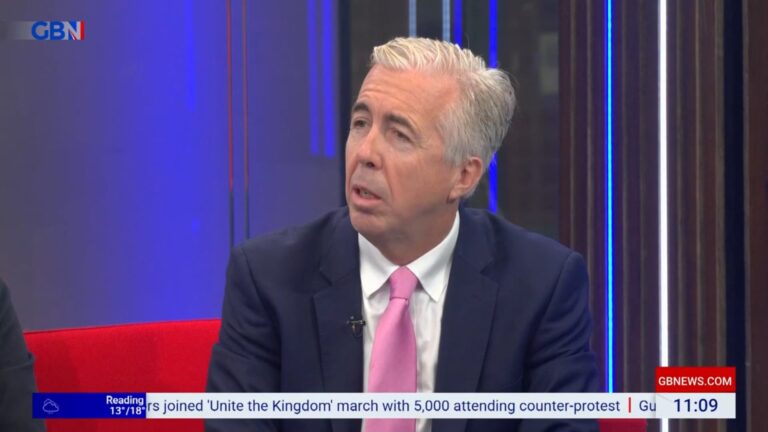The Government’s National Food Strategy has a bold ambition: to transform the UK’s food system by making it healthier, more sustainable, more resilient, and more affordable. Branded as a “once-in-a-generation opportunity”, the strategy will attempt to address a host of interconnected challenges, from public health and food insecurity to climate impact and workforce shortages.
But is it achievable? While the strategy’s ambition is admirable, its breadth may prove to be its greatest challenge. Delivering all these outcomes in tandem, plus economic growth, risks pulling policy in competing directions. Some outcomes may involve trade-offs or prove mutually exclusive in practice. Turning such a wide-ranging vision into reality will require difficult choices, sustained political coordination, and a willingness to confront where priorities conflict.
Transforming the UK’s Food System
At its core, the strategy recognises the systemic nature of the UK’s food-related challenges. It highlights how our current food system is entrenching some of the most pressing issues of our time; obesity, diet-related illnesses, environmental degradation, and poverty.
The policy paper acknowledges the feedback loops that sustain these problems, such as the ‘junk food cycle’, and sets out an aspiration to break them. It advocates for a shift towards diets richer in fruit, vegetables, and wholegrains, and lower in salt, sugar, and saturated fat. This is not only a public health goal but also a means of easing NHS pressures and improving workforce productivity.
Crucially, the strategy seeks to align economic growth with social and environmental goals, promoting healthier choices, protecting the most vulnerable, and strengthening food system resilience. But achieving this harmonious ‘good food cycle’ will require more than good intentions.
Consumer Behaviour: The Weak Link?
A central pillar of the strategy is the assumption that improving food environments, through product reformulation, better labelling, and restricted marketing, alongside equipping consumers with knowledge and skills, will be enough to catalyse behaviour change. However, this may underestimate the scale of the challenge.
Efforts to raise food literacy and shift eating habits have been policy goals for decades, with only limited success. Entrenched cultural norms, socioeconomic barriers, and the continued influence of advertising may prove resistant to change. Without sustained investment, expecting consumers to drive the shift towards healthier and more sustainable diets could be overly optimistic.
Voluntary Measures or Regulatory Bite?
The Government continues to favour a voluntary approach with industry, encouraging reformulation, innovation, and investment through incentives rather than regulation. Yet this method has often failed to deliver at the necessary pace or scale.
In a competitive, low-margin sector, voluntary action may not be sufficient to shift market dynamics. Without firm regulatory levers, whether on product composition, marketing, or procurement, there is a risk of inertia or piecemeal change.
Furthermore, policy goals aimed at improving sustainability and health outcomes could introduce higher costs for businesses, which may be passed on to consumers, a difficult proposition amid persistent food price inflation.
Skills, Labour and Automation
The strategy rightly places emphasis on skills development and automation, identifying workforce reform as a lever for productivity and resilience. However, the timescales for transformation are long, and may not address acute labour shortages in the short term.
The food and farming sector remains heavily reliant on migrant labour, a tension that sits awkwardly with political pressures to reduce immigration. Without pragmatic action, workforce challenges could become a major barrier to success.
There are also broader concerns around the social impact of automation, especially in rural communities already expressing discontent over policy changes, such as reforms to agricultural inheritance tax. The Government will need to tread carefully to avoid alienating farmers further.
Trade, Standards and Domestic Production
Balancing trade liberalisation with the maintenance of high food and animal welfare standards remains a thorny issue. The strategy outlines an ambition to promote British produce and boost exports, while also ensuring resilient domestic supply of healthy foods such as fresh fruit and vegetables.
However, expansion in domestic production could create tension with land-use priorities, such as biodiversity and carbon sequestration. The solution, according to the strategy, lies in technological innovation, improving yields without increasing land footprint. But placing too much reliance on emerging technologies could prove risky.
Building more resilient supply chains may also require upfront investments in processes that are initially less efficient or profitable. While this may pay off in the long term, it introduces short-term costs and complexities that may test both business appetite and government resolve.
Political Coherence and the Role of Industry
One of the greatest challenges facing the National Food Strategy is the fragmented nature of policymaking. Delivering a truly integrated approach will require unprecedented coordination between Defra and other departments such as HM Treasury, DHSC, and DESNZ, all of which
have their own missions to deliver. Aligning diverse policy goals, from tackling obesity and promoting economic growth to ensuring environmental sustainability, will not be easy.
Industry also has a vital role to play. The Government has pledged to provide a stable and transparent policy environment to unlock private sector investment. But for this to succeed, food businesses must be active participants in shaping the strategy. It is industry that best understands the practical challenges of implementing food sector reform. Businesses must find ways to cut through the noise and clearly articulate their aspirations and priorities.
The National Food Strategy presents a significant opportunity for food brands and advocacy groups alike to help shape a future food system that works for everyone. Achieving a balance between improved public health and sustainable economic growth is not only possible, it is essential. But success will require meaningful, sustained dialogue between government and industry.
At PLMR, we work with organisations across the food, health, and energy sectors to navigate the policy landscape, engage stakeholders, and shape public discourse. If you would like to discuss how to position your organisation within the National Food Strategy debate, please contact alex.wray@plmr.co.uk







